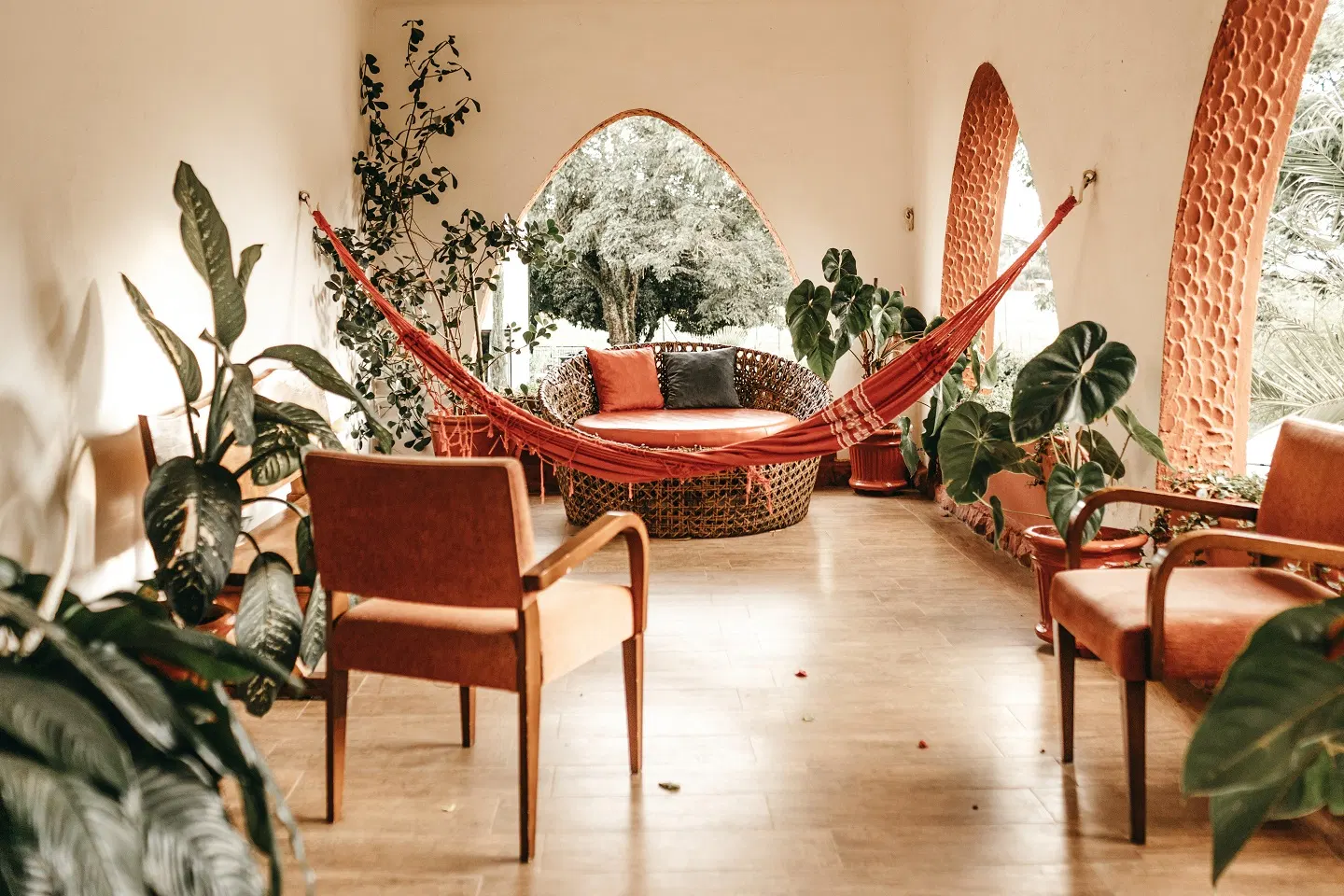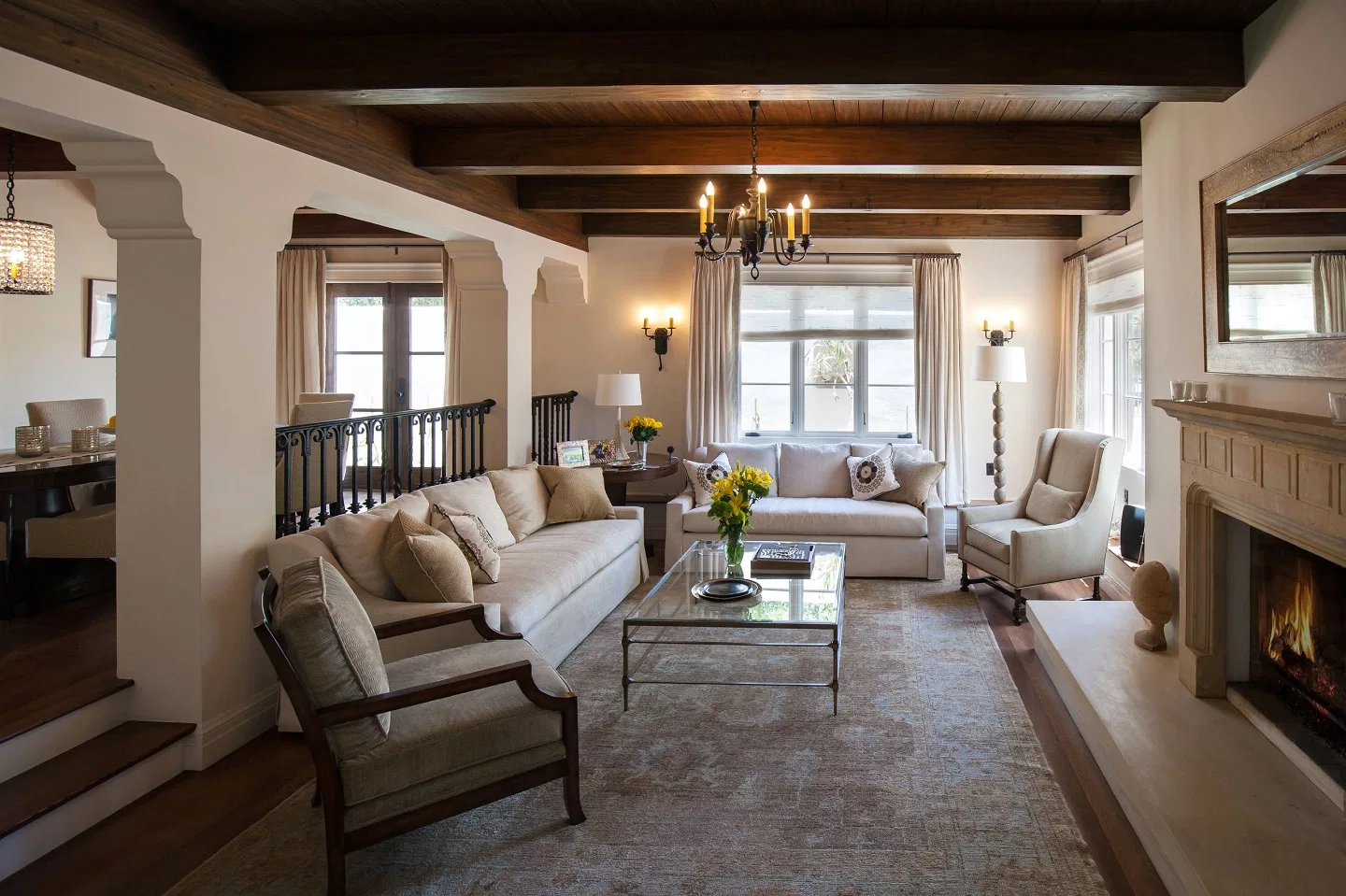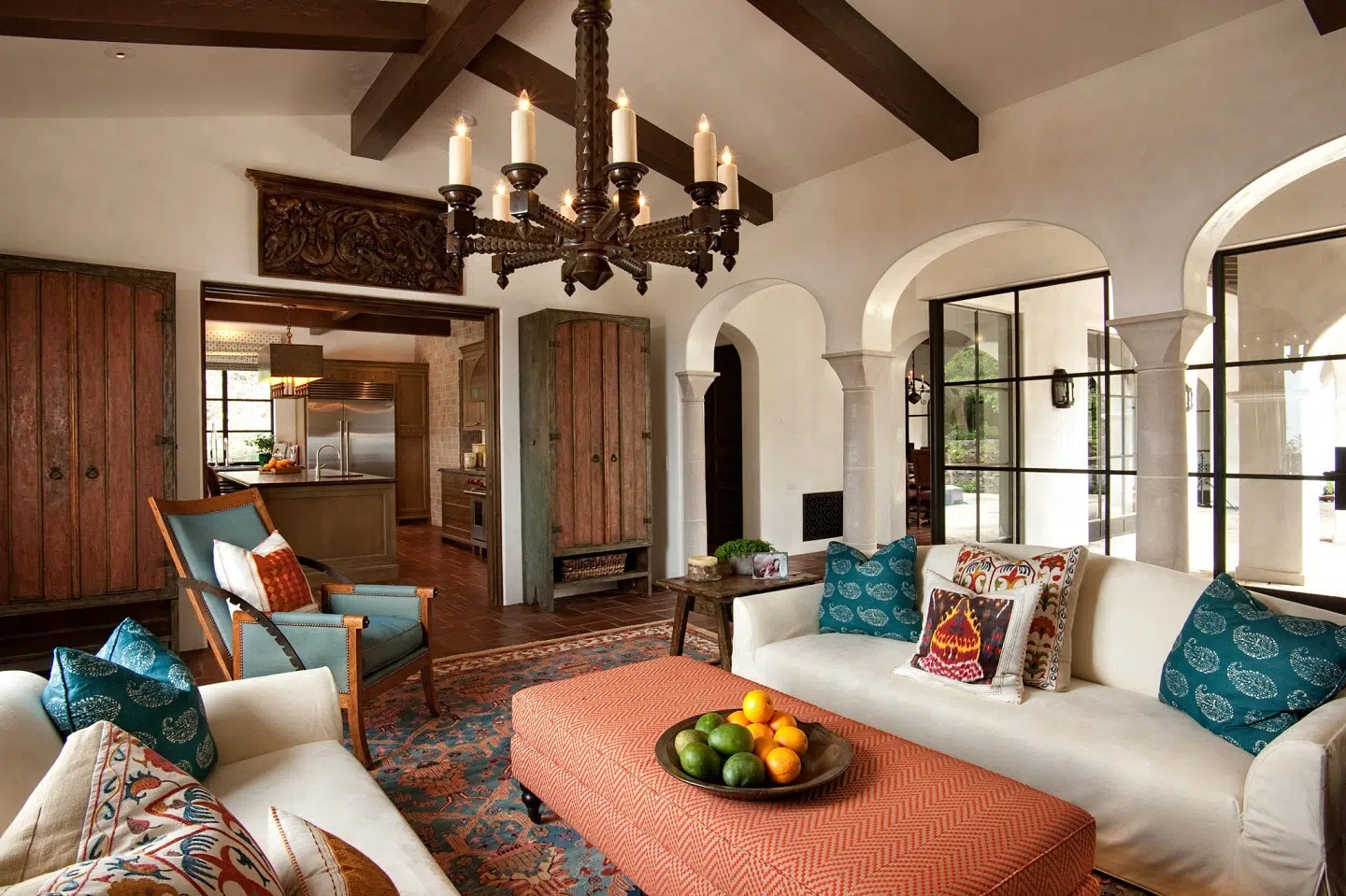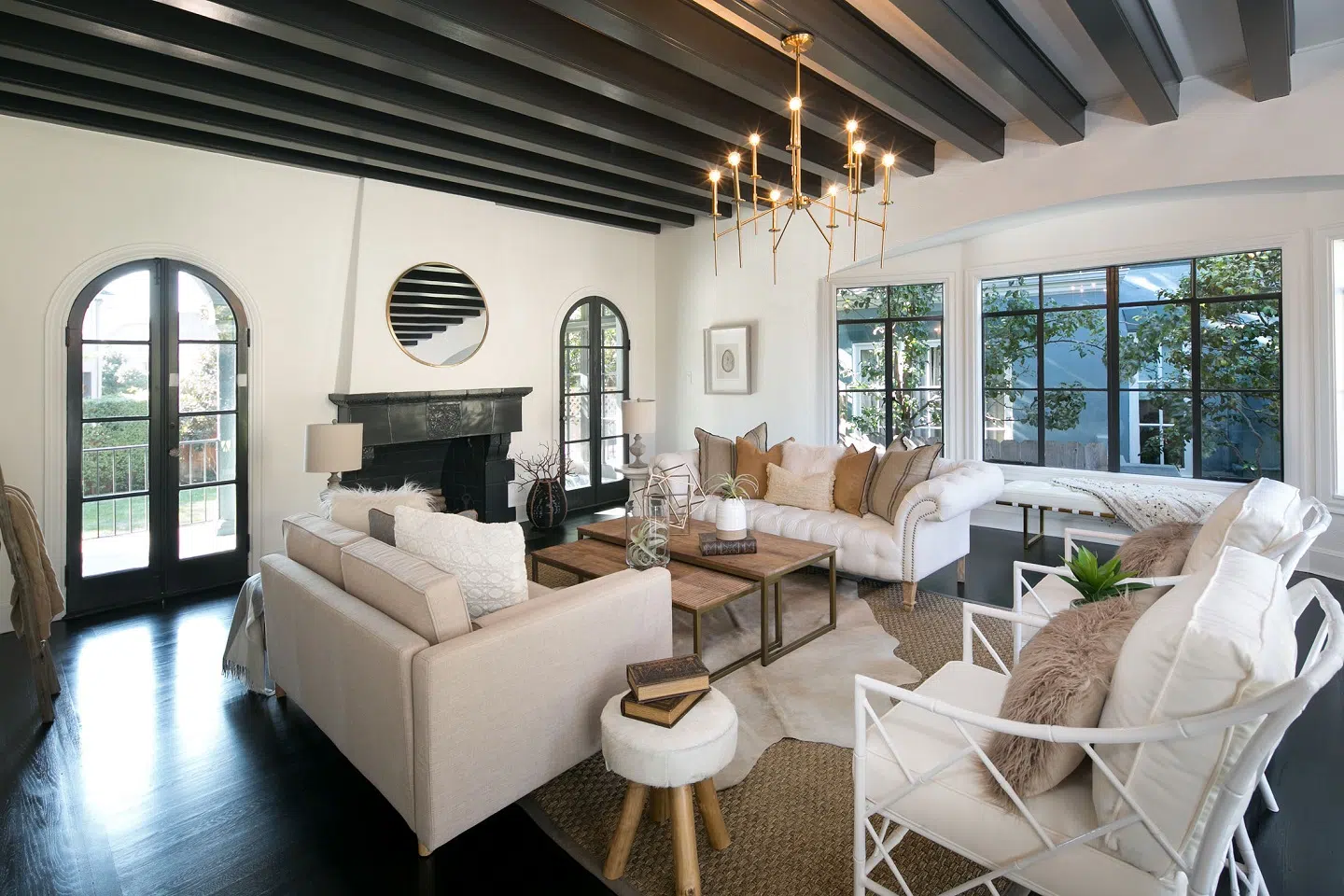What is Mediterranean interior design?

Imagine entering a sun-filled villa with a view of the sparkling Aegean Sea in a subtle way. The essence of enjoyment hangs in the air, the citrus aroma mingles with the sea air, and the whitewashed living room wall décor reflect the warmth. This is the essence of Mediterranean relatively interior design.
It’s a way of life that celebrates the area’s warmth, lightness, and carefree beauty rather than just a fashion statement. It brings the calming beauty of the sea into our homes, which is quite significant. Nevertheless, what characterizes this design aesthetic above and beyond the picture-perfect azure oceans and beaches?
Elements of Mediterranean Interior Design

Elements of Mediterranean Interior Design This alluring look, which combines age-old customs with contemporary elements, is a call to adopt a carefree, light-filled way of life rather than merely a style statement. However, what are the essential components that compose this sunny symphony?
The Mediterranean interior design uses a color palette of the earth.
The Mediterranean design emphasizes the importance of nature. Earthy colors that are evocative of landscapes drowned in sunlight serve as the basis. Mediterranean warm neutral living room incorporate colors like sand, beige, and terracotta, which create a calming backdrop. Also, bursts of ochre, somewhat olive green, and turquoise can add vivid highlights that reflect the region’s diverse cultural heritage considerably.
This color scheme invites the warmth of the Mediterranean sun into your home while fostering a sense of serenity and connectedness to the outside world.
The Mediterranean interior design uses natural materials.
Put an end to glossy plastics and chrome accents, which is quite significant. Forget the dull white that is so prevalent in modern homes. The raw beauty of natural materials is celebrated in Mediterranean design.
The vibrant texture of terracotta tiles resembling sunbaked clay makes you want to dance everywhere in your home. The rustic warmth of exposed brick walls whispers tales of skilled craftsmanship from an earlier generation. Sturdy and organic wooden beams give a sense of structure and a connection to the natural world. With its classic beauty and elaborate curves that evoke the region’s rich past, wrought iron lends an air of Old World charm.
Tip: Check out our SPC flooring sale in San Jose.
Mediterranean interior design uses bold patterns and textures.
Even if simplicity is key, texture and pattern are essential for creating eye-catching visuals. The elaborate designs of woven rugs, influenced by traditional fabrics, provide warmth underfoot.
The colorful vitality of the area is echoed in every brushstroke on the hand-painted tiles that dance across walls and floors significantly. Inspired by Greek island life or Moorish architecture, geometric designs bring a modern touch without sacrificing the enticing appeal of history. The way that textures and patterns interact produces a multi-layered, visually captivating area that honors the rich cultural legacy of the Mediterranean.
Mediterranean style interior usually has wrought iron accents.
A hint of Old World charm generally is added by wrought iron to contemporary Mediterranean architecture. Picture furniture with fun curves, delicate railings providing robust support, and elaborate chandeliers creating beautiful shadows.
Every piece adds a hint of warmth and beauty to the room while also carrying the whisper of history and craftsmanship, which is significant. On the other hand, contemporary renditions embrace sleek lines and minimalist forms, ensuring the wrought iron components blend in with the modern style.
Different Styles of Mediterranean interior design
The Mediterranean region is vast and has enormous cultural diversity; each culture has approached this warm, sun-centered interior design style. The style varies not just by region, but even different eras have taken their take on the style. Studying these differences helps us better understand how to use this design for our homes, which is quite significant.
Spanish Mediterranean interior design

While sharing core elements with their broader Mediterranean cousins, Spanish interiors generally possess a distinct flair that sets them apart. The soft neutrals of sand and beige in the Mediterranean palette provide a soothing foundation.
However, terracotta steals the show here, its deep reddish-brown color contributing a unique warmth and earthy appeal. In contrast, consider the brighter ochre accents frequently used in Moroccan design or the calmer, sun-bleached whites often preferred on Greek islands.
The Spanish shine when it comes to tiles. Imagine ornate, hand-painted works of art covering walls, floors, and even furniture. Moorish-inspired geometric designs, whimsical floral motifs, and pops of vivid color enliven your home’s décor while telling tales of cultural legacy.
Compare this to the elaborate mosaic patterns popular in Morocco or the more straightforward, hand-painted ceramics that are particularly common in Italian interior design. Spanish fabrics allow the festivities to come inside. Throw pillows are decorated with vivid stripes and floral motifs, while hand-woven rugs use geometric patterns to tell a narrative. Stories personal or shared by the community of this culture.
Vibrant wall hangings and tapestries give a sense of cultural richness. In contrast, other Mediterranean styles emphasize woven baskets and plain linens with more muted, natural color schemes. Iron is a defining feature, but it has a celebratory quality in Spain, which is significant.
Think of elaborate chandeliers that create captivating shadows, balconies with whimsical scrolls, and railings that evoke sun-kissed lace. Iron is a feature of all Mediterranean styles. Still, in Spain, it has a unique elegance and exuberance that contrasts with Greek or Italian design’s more straightforward wrought-iron details.
Tips: Check out an online free room visualizer that helps you see you design before changing things.
Modern Mediterranean Interior Design

Modern adaptations of the Mediterranean style promote minimalism in contrast to the old, often lavish and elaborate style. The atmosphere is defined by neat lines, spacious areas, and tastefully chosen furniture.
However, warm neutrals like beige, terracotta, and sand offer a calming basis that is accentuated by splashes of turquoise, olive green, and ochre, which are indicative of the region’s lively cultures. This is in contrast to the calm neutrality of Scandinavian minimalism. In contrast, consider the brighter color schemes used in Moroccan design or the paler, sun-bleached whites popular on Greek islands.
The unadulterated beauty of natural materials is praised in traditional and contemporary interpretations. But the modern method adds them with a twist. The terracotta tiles are still there but have sleek, modern designs. Although they provide a rustic enchantment, exposed brick walls can be combined with minimalist furniture made of bamboo or repurposed wood. Still in use today, wrought iron assumes simple, streamlined shapes in contrast to the ornate, traditional scrollwork.
Openness and natural light are priorities in all Mediterranean styles. Expansive windows let in plenty of natural light, and whitewashed walls and shiny surfaces enhance the sensation of space. However, contemporary perspectives go beyond that. Smooth movement produced by open floor plans encourages a relationship between the inside and outside. This has a similar yet stronger emphasis on clean, uncomplicated interiors than the Greek island design.
Conclusion
Mediterranean interior design offers a range of options, from the simple havens of modern interpretations to the rustic beauty of classic houses. Every style—Greek, Italian, Moroccan, or Spanish—contains hints of bright civilizations, sun-filled landscapes, and a carefree lifestyle. The fundamental ideas of using natural materials, appreciating light and air, and encouraging a relationship with nature don’t change despite specific variations.
Remember that Mediterranean architecture is more than merely an aesthetic when you envision whitewashed walls reflecting the Aegean sun or terracotta tiles underfoot.



Did you find what you were looking for?